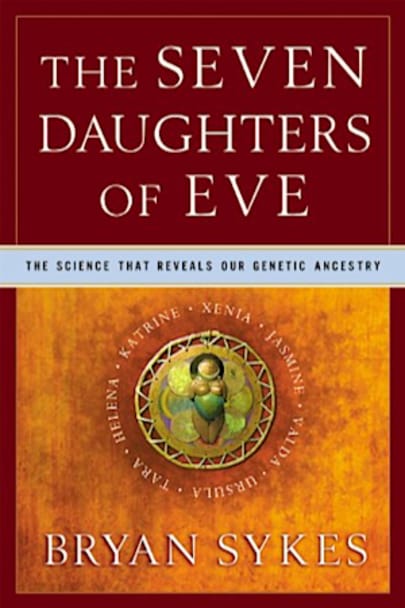In 1994 Bryan Sykes was called in as an expert to examine the frozen remains of a man trapped in glacial ice in northern Italy for over 5000 years–the Ice Man. Sykes succeeded in extracting DNA from the Ice Man, but even more important, writes Science News, was his “ability to directly link that DNA to Europeans living today.” In this groundbreaking book, Sykes reveals how the identification of … of a particular strand of DNA that passes unbroken through the maternal line allows scientists to trace our genetic makeup all the way back to prehistoric times–to seven primeval women, the “seven daughters of Eve.”
more



I was fascinated by the combination of history, genealogy, and science in Sykes’s work. The book provides an introduction to the study of genetics, and to the legacies that are carried from generation to generation among the population.
Although much has been learned since this book was written, it’s still a great introduction to understanding our mitochondrial dna and where we come from.
Lots of interesting science information written in understandable language, proposing the theory that all humans come from the same seven women’s DNA. A powerful thought, making the human race more of a human family.
Great resource for my research on the Circassians ancestors!
This is the best book I have ever read about human history, migration, and mitochondrial DNA, and it is easy to read and understand.
Learned so much about modern genetics.
Great book if your in “DNA”. Lots of information about your early mother’s mother.
The Seven Daughters of Eve was fascinating and informative. It is amazing what scientists can learn from mitochondrial DNA.
A fascinating read, a complex story told in common language! Very engaging. Difficult to put down!
Incredibly informative
Very entertaining presentation of genetic info.
Exceptional. A true history of the peoples of the European Continent. An eye-opener. I enjoyed it even on a lay man’s level.
Great first person historical account of DNA and genome tracking.
This was an interesting book. It is part nonfiction, part about genetics, part about archeology, part world/human history and part fiction;or what the author calls imaginings that he has anout fossils that have been fiscovered over the decades
I found the first half of the book informative. I found the second half, where the author speculates about the daughters of Eve, to be, well, speculative and not particularly relevant to any reader who was interested in the science and politics of the first part of the book. I power-read the second half in a half hour, gleaning a few scientific …
I especially liked how author brought history to life. I’ve also read his book about matrilineal roots of Ireland, UK & other Celtic areas.
I have loved and reread this book. It was the first I read that used DNA to trace ancestry and I really found it fascinating. In retrospect I think it is a bit ‘scattered’ in what it includes. Unlike some others, I enjoyed the stories at the end that brought the people to life.
This is beautifully-written popular science, the story of mitochondrial DNA and how it reveals the descent of all human beings from a small number of “clan mothers.” I say story because the book is a compelling narrative, difficult to put down.
Great book, excellent research, very good writer. Very enjoyable reading. Considering the subject matter he had an excellent delivery, easy to understand. Made the book very enjoyable.
I really enjoyed this book right up to the point where the author invents make-believe lives for each of the 7 woman who are the focus of the book.
The DNA work is awesome and richly informative for someone like me who is in to the DNA backgrounds of my family.
I will read another of his books on the DNA make up of the British lsles when I decide …